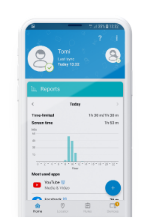Securing your kid's tech for the modern classroom
Prepare for the upcoming school year
It’s one thing to offer college and post-graduate students online classes. It’s another thing to ask kids K-12 to move to a 100% distance learning environment—practically overnight. Yet, that’s what many parents have had to do as a result of the Covid-19 pandemic.
Today, as we near the one-year mark of this new learning paradigm, we know two things for sure: Getting kids dialed into distance learning is not easy; and the risk of cyberattack inherent in distance learning is significant.
Citing a late-2020 uptick in ransomware attacks, the FBI is actively warning the public of cyber threats to distance learning. They’ve joined forces with the Cybersecurity & Infrastructure Security Agency (CISA) and the Multi-State Information Sharing and Analysis Center (MS-ISAC) to publish an assessment of the different ways that K-12 distance learning environments are being threatened by “malicious cyber actors.” Here’s a closer look at what this assessment reveals:
In a distance learning environment, you have many different people, on many different networks and computers, accessing a variety of different systems. Unfortunately, these are prime conditions for a ransomware attack, in which data, systems, or other digital assets are held hostage until a cash ransom is paid.
According to the same Joint Cybersecurity Advisory alert mentioned above, K-12 environments accounted for 57% of ransomware attacks in August and September of 2020. A September 2020 ransomware attack in Los Angeles disabled a school district’s server and email, bringing distance learning to a halt for some 6,000 students. A November 2020 ransomware attack in Baltimore yielded similar consequences.
Most distance learning-related ransomware attacks target the educational institutions themselves. Thus, the responsibility for ransomware mitigation is mainly on your student’s school or school district. However, here are some useful preventive measures for parents:
Despite its complicated moniker, a DDoS attack is based on a simple concept: Quietly infect a network of computers and use those infected computers to spread malware, send spam, disrupt system operations, and so on.
Similar to ransomware attacks, protection against DDoS attacks falls heavily on the shoulders of school administrators. The main step that parents can take against DDoS attacks is to protect all of their home devices with advanced internet security software.
While less damaging, arguably, than ransomware and DDoS attacks, so-called “Zoombombing” can be extremely disruptive. With so many distance learning environments using Zoom video conferencing as a digital classroom, some bad actors have found a new tactic: Infiltrating Zoom meetings and hijacking control to display rude, offensive or explicit content.
Many defenses against Zoombombing, such as requiring meeting passwords and using an attendee waiting room, are up to the meeting organizer. But at a fundamental level, parents should make sure their children have set very strong Zoom passwords.
It’s important to make sure your own kids aren’t participating in Zoombombing themselves, either by perpetrating the prank itself, or enabling someone else by sharing meeting credentials. It might seem harmless, but it’s a waste of valuable learning time with the potential to expose kids to hateful or disturbing content.
Ask any teacher tasked with managing a remote learning environment. They’ll tell you that they’re spending more than half of their time on technical support. Kids need help logging in, making Zoom work properly, and so on. Distance learning is an adjustment for everybody. Unfortunately, this creates all kinds of security vulnerabilities, some of which we’ve covered above.
Beyond protecting against specific threats, such as ransomware, DDoS, and Zoombombing, parents can reduce the risk of cyberthreats by practicing these fundamentals of internet security:
Finally, and maybe this goes without saying, thank your teachers. They’ve certainly got their hands full.


With ESET Parental Control for Android
Try free for 30 daysPrepare for the upcoming school year
The risk of cyberattack in distance learning is significant
Teachers around the world are adapting to the “new normal” of remote teaching. And while some schools are beginning to open back up, teachers and parents should still be thinking about how to stay connected with classrooms from a distance.